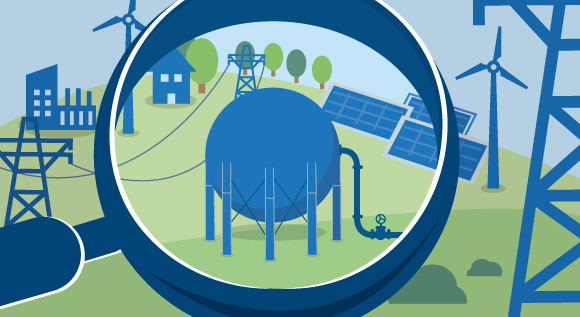What exactly is the bioeconomy?
Bicycle tires made from dandelion caoutchouc, reusable cutlery from palm leaves, vegan ‘leather’ made from mushrooms, packaging made of straw. What is the role of the bioeconomy in this? Come this way to find out.
 © BMWi
© BMWi
This is what it’s all about: Renewables, bio-based natural resources can replace oil and other fossil materials in many areas of our lives.
Bicycles made from bamboo, food colouring from apple pomace – there are almost endless possibilities in which the industrial bioeconomy can make our products more sustainable and climate-friendly. You’ve never heard about the bioeconomy? This is what it is:
More climate action, less dependency on coal, gas etc.
Oil, gas, coal and other energy sources that are used in the production of many projects are finite, meaning they will run out at some point. So what should we be using instead? There is a quest for new, non-fossil raw materials. The industrial sector is also looking for these. If you switch over to using renewable, bio-based natural raw materials, this will make you less dependent on fossil fuels and also help you conserve energy and be more climate-friendly. After all, this sustainable way of doing business causes fewer carbon emissions from industrial processes and uses less water and energy. In other words, the industrial bio-economy is about a modern, environmentally-friendly way of doing business that makes efficient use of biological resources such as plants, animals and microorganisms.
Peter Altmaier: ‘Biologisation’ is the next big thing after digitisation
It could result in innovative production methods, new products and fresh growth opportunities for almost all sectors. This will not only help protect resources and the environment, it is also an interesting prospect for German businesses. Experts say that there are strong growth opportunities for the global bio-economy over the next 20 to 30 years. A study conducted by the European Commission in 2019 estimates a rise in global turnover to €22 bn or €23 bn per year by 2050 (from today’s approx. €14 bn). Federal Minister for Economic Affairs and Energy Peter Altmaier is therefore sure that: “After digitisation, biologisation of the economy will usher in the major cycle of growth and innovation.”
Research funding for the bioeconomy: From lab to market
There are many labs where successful research is already being done into these new technologies. To help with the transfer from lab to market, the Federal Ministry for Economic Affairs and Energy has launched a dedicated funding programme for the industrial bioeconomy. The first two funding awards were handed over in late June 2021. The first of the projects to have received funding will demonstrate how it is possible to protect the climate and the environment without having to do without the taste of meat. Mycelia, parts of mushrooms, are used to create meat substitutes. The second project uses CO2, initially from biogas plants, to cultivate algae. If used at a large scale, this could help cut CO2 emissions quite considerably.
Digital landscape for best-practice examples
To highlight these and other exciting ideas for everyone to see, the Federal Ministry for Economic Affairs and Energy and the Industrial Bioeconomy dialogue platform are building an online map on which companies can have their activities in the field of the bioeconomy pinpointed. Did you know, for instance, that mushrooms can be used as natural insulation? The Nature Foam project, for example, uses mushrooms to bind together biogenic waste materials such as wood or straw to make stable insulation panels. The mushrooms form a dense network of chitin fibres. After a few days, this results in dense and stable panels made from natural resources and offering excellent insulation. The panels are fully biodegradable.
Exemplary networking between showcase regions
Some German regions have already got well-established networks in the field of the industrial bioeconomy, sometimes even with demonstration plants that can produce goods at a large scale. This helps companies bring products from the conceptual phase to industrial production and integrate them into regional value networks. Interested regions can apply for this. Find out more here.
If you want to learn more about the bioeconomy, you can also consult Germany’s National Strategy for the Bioeconomy (in German only) which was adopted in early 2020 (PDF download, 10 MB) or the 2030 Industrial Strategy on the Industrial Bioeconomy (in German).
Further information
- National Strategy for the Bioeconomy
- Federal Ministry for Economic Affairs and Energy: Biotechnology and bioeconomy
- Federal Ministry for Economic Affairs and Energy: Biotech industry
- Federal Ministry for Economic Affairs and Energy: Funding programme for the industrial bioeconomy
- Concept 2.0 for the dialogue platform for the industrial bioeconomy (PDF download, 0.5 MB)

